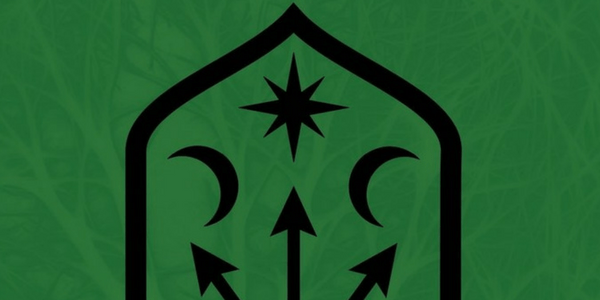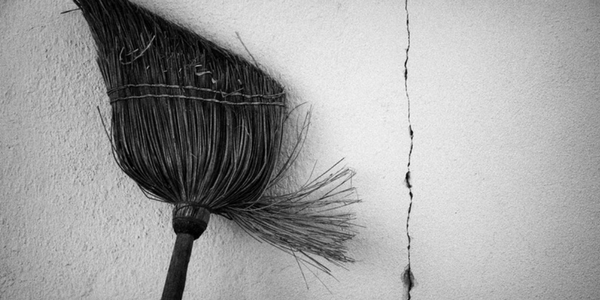 It’s hardly surprising that something called chaos magick is constantly in flux, both in terms of what gets classed as chaos magick and the people it attracts.
It’s hardly surprising that something called chaos magick is constantly in flux, both in terms of what gets classed as chaos magick and the people it attracts.
I was first introduced to the subject by some English bloke on IRC in a random Wiccan chatroom1 who later, through a series of unlikely circumstances, became my partner.2 He introduced names I’d never heard of before: Austin Osman Spare, Peter J Carroll, Robert Anton Wilson – people with three names writing weird and wonderful things.
It was refreshing. I was young, and apart from a few friends in high school, I didn’t know anyone else who was interested in magick. Until I found the chaotes, all I knew were Pagans whose religious beliefs didn’t quite gel with mine, or pedantic ceremonialists who bickered over trivia that seemed unnecessary.3
From there I devoured everything I could find: Ray Sherwin, Phil Hine, Stephen Mace, Jan Fries, Steve Wilson, Ramsey Dukes, Jaq Hawkins, Hakim Bey, ye gods even Adrian Savage, simply because the word “chaos” appeared in the titles of their books. The texts were difficult to find, expensive and experimental; the websites were raw and awkward, but their authors were approachable. More importantly, I’d found something that worked for me.
First Wave
There’s basically two kinds of magick. There’s puff’s magick, and git ‘ard Magick. Chaos is git ‘ard Magick.”
– Mick McMagus
 It’s been interesting to see how the chaos current has changed over the years. From the first wave, developed by Peter Carroll and Ray Sherwin in the late ’70s and early ’80s in England, a sort of reaction against what was going on with Thelema at the time. With a label like “chaos” and an eight-rayed start as its symbol, of course it was going to acquire a dark mystique. If Thelema was the sex, drugs, rock ‘n’ roll of the occult, then chaos magick was its punk – with all that entailed.
It’s been interesting to see how the chaos current has changed over the years. From the first wave, developed by Peter Carroll and Ray Sherwin in the late ’70s and early ’80s in England, a sort of reaction against what was going on with Thelema at the time. With a label like “chaos” and an eight-rayed start as its symbol, of course it was going to acquire a dark mystique. If Thelema was the sex, drugs, rock ‘n’ roll of the occult, then chaos magick was its punk – with all that entailed.
It’s no coincidence that chaos magick arose during the same period as chaos mathematics. Even today Carroll continues his attempts to marry science and magick.
 Liber Null was heavily influenced by Aleister Crowley, of course, with several exercises and examples drawn almost directly from Magick. Several people were promoting Austin Osman Spare in various magazines and small press, and Spare’s influence was formative, as was Lionel Snell’s S.S.O.T.B.M.E., with its abstract philosophy.
Liber Null was heavily influenced by Aleister Crowley, of course, with several exercises and examples drawn almost directly from Magick. Several people were promoting Austin Osman Spare in various magazines and small press, and Spare’s influence was formative, as was Lionel Snell’s S.S.O.T.B.M.E., with its abstract philosophy.
Second Wave
 When Peter Carroll and Ray Sherwin started calling what they did chaos magick, the idea was informed by the emerging field of chaos mathematics, the books published in the 90s carried that influence and incorporated the it into the every day in the works of Phil Hine and Ramsey Dukes (Lionel Snell), and Stephen Mace, Jan Fries, Steve Wilson and others developed these ideas further.
When Peter Carroll and Ray Sherwin started calling what they did chaos magick, the idea was informed by the emerging field of chaos mathematics, the books published in the 90s carried that influence and incorporated the it into the every day in the works of Phil Hine and Ramsey Dukes (Lionel Snell), and Stephen Mace, Jan Fries, Steve Wilson and others developed these ideas further.
The second wave exploded online in the 90s, with websites like Tzimon Yliaster’s Tools of Chaos, 1351’s Choronzon, Fenwick’s Chaos Matrix, and e-lists such as the Z(Cluster), AutonomatriX, chaoskaos and various groups both online and off.
Third Wave
 Over the past few years it seems a third wave has been rising, repopularizing “pop culture magick”, abstracting insight from anywhere and everywhere and, to paraphrase Crowley, “interpret every phenomenon as a particular dealing of God with one’s Soul.”
Over the past few years it seems a third wave has been rising, repopularizing “pop culture magick”, abstracting insight from anywhere and everywhere and, to paraphrase Crowley, “interpret every phenomenon as a particular dealing of God with one’s Soul.”
It’s all relevant, and it’s all meaningless. Nothing is true, everything is permitted. The face changes, but the core of the philosophy remains the same.
Change
 The philosophy may be the same, but the personality shift is drastic.
The philosophy may be the same, but the personality shift is drastic.
The 90s chaotes were egotistical, couple that with the pseudo-anonymity of the Internet,4 and you find that chaotes in the 90s were assholes. It was part of the aesthetic. Lovely people when you got to know ’em, but with an exceptionally low tolerance for bullshit. After the newagers5 and lighter fare of certain neo-Pagans groups, it was refreshing to actually be challenged for once. I loved it.
Today’s chaotes don’t seem to be like that. They’re nice. Friendly, even. It’s a little disconcerting.
I’m not sure if it’s reflective of the happy go-lucky so-called “millennials” that are making up the Nu Kaos Kids, or that as the old chaotes age the posturing no longer seems necessary. But the old standby doesn’t seem to fit as well as it once did. Hell, even I’m getting nicer.6
So, darling chaotes of the future, if crusty old people in their, er, early 30s appear dark and angsty, continue to be yourself, you adorable little shiny rays of sunshine dressed like Neil Gaiman’s Death, and we can’t help but warm to you.
It’ll be interesting to see where this goes. The dark, evil roots seem to be buried — at least for now.
A Question
Are the new kids going back and reading the old stuff? Not just the founders of the current, Peter Carroll, Ray Sherwin, but also its influences, Crowley, Spare, Grant?
The period ‘zines and journals were key,7 like Chaos International, Kaos, The Lamp of Thoth. Excerpts from Liber Nox has recently been republished again by Original Falcon as Infernal Texts: Nox and Liber Koth,8 are people buying them?
When I’ve lectured on chaos magick, I’ve given reading lists, and earlier shared my top five books on the subject. I hope people are still reading these books, and working with them..
First published on Plutonca.net 16 December 2009.
Image credit: Peter Rosbjerg.
- Hey, this was a thousand years ago in Internet time. (Also known as 1997.) There wasn’t much available for the magickally-inclined on IRC. (Is there now?) [↩]
- Ten years together. Eight years married. It’s pretty weird. [↩]
- I didn’t really get Thelema, at that point, and even today much of ceremonial magick retains an air of solemnity that’s more than a little off-putting. [↩]
- Hey, remember when the Internet used to be like that? It was cool, wasn’t it? [↩]
- Newage, rhymes with sewage. Remember it, kids. [↩]
- I know. It’s weird for me, too. [↩]
- We talked a bit about this last year in “Occult ‘zines as cultural artifacts“. [↩]
- I reviewed an earlier edition of Infernal Texts for SpiralNature.com. [↩]








